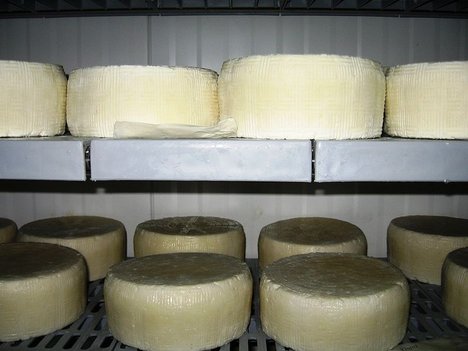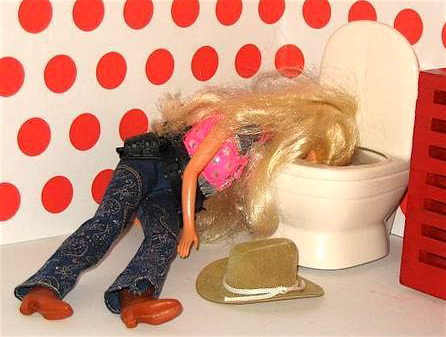Although nominally about epidemiological basics and evaluative techniques during an outbreak of foodborne illness, a new paper also provides some details – and investigative uncertainty — during a 2008 outbreak of E. coli O157:H7 linked to raw milk cheese in Quebec (that’s in Canada).
The authors write in the Journal of Food Protection that on 4 December 2008, the Bureau de surveillance et de vigie at the Ministe`re de la Sante´ et des Services sociaux in the Province of Quebec, Canada, was notified by the Laboratoire de sante´ publique du Que´bec (LSPQ) of a cluster of three E. coli O157:H7 cases with the same pulsed-field gel electrophoresis (PFGE) profile, 849.
This PFGE profile was designated EC849 according to the Quebec nomenclature and ECXAI.2091/ECBNI.0570 according to the PulseNet Canada database.
During the same period, public health authorities from Ontario notified the Bureau de surveillance et de vigie in Quebec about an Ontario case who acquired an E. coli O157:H7 infection with the same  PFGE profile, and who had traveled to Quebec 2 to 10 days before his onset of symptoms. This specific PFGE profile was not found in other Canadian provinces or in the United States.
PFGE profile, and who had traveled to Quebec 2 to 10 days before his onset of symptoms. This specific PFGE profile was not found in other Canadian provinces or in the United States.
On 15 January 2009, a cumulative total of 16 EC849 cases had been reported to Quebec and Ontario public health authorities. Fourteen cases lived in Quebec. Two lived in Ontario, but visited the Province of Quebec within 10 days preceding the onset of their symptoms. Of the 16 cases, 62.5% were female and 87.5% were older than 20 years (median, 38.5 years; range, 7 to 76 years). All the cases had diarrhea and blood in their stools. Fifty percent were hospitalized; one of them had thrombocytopenic thrombotic purpura and was hospitalized
for 32 days. If we exclude Ontario cases, no Quebec cases had traveled outside the province in the 10 days preceding their symptoms. The first case (an Ontario case) had onset of symptoms on 26 October, 7 or 8 days after having visited the cheese plant that produces cheese A, where he had eaten the cheese directly. The last case had his onset of symptoms on 26 December 2008. The majority of the cases had their onset of symptoms between 16 November and 7 December 2008. The epidemic curve suggested an exposure span over 2 months.
Escherichia coli O157:H7 outbreak linked to raw milk cheese in Quebec, Canada: Use of exact probability calculation and case study approaches to foodborne outbreak investigation
02.may.12
Journal of Food Protection®, Volume 75, Number 5, May 2012 , pp. 812-818(7)
Gaulin, Colette; Levac, Eric; Ramsay, Danielle; Dion, Réjean; Ismaïl, Johanne; Gingras, Suzanne; Lacroix, Christine
http://www.ingentaconnect.com/content/iafp/jfp/2012/00000075/00000005/art00001
Abstract:
The analytical studies used to investigate foodborne outbreak are mostly case-control or retrospective cohort studies. However, these studies can be complex to perform and susceptible to biases. This article addresses basic principles of epidemiology, probability, and the use of case-case design to identify the source of an Escherichia coli O157:H7 outbreak linked to raw milk cheese consumption in Quebec, Canada; a small number of cases with the same pulsed-field gel electrophoresis (PFGE) profile were involved. Between 4 December 2008 and 15 January 2009, a cumulative total of 16 E. coli O157:H7 cases with the same PFGE profile were reported to Quebec public health authorities. Among the first six cases reported, three had consumed raw milk cheese from the same producer (cheese A). Raw milk cheese is consumed by about 2 % of the Quebec population. By using the exact probability calculation, it was found that a significantly higher proportion of E. coli O157:H7 cases (with the specific PFGE profile) than expected had consumed cheese A (P < 0.001). These computations were updated during the course of the investigation to include subsequent cases and gave the same results. A case-case study corroborated this result. This article considers alternative statistical and epidemiological approaches to investigate a foodborne outbreak—in particular with an exact probability calculation and case-case comparisons. This approach could offer a fast and inexpensive alternative to regular case-control studies to target public health actions, particularly during a foodborne outbreak.

.jpg) 2009. Officials said the review was done and was awaiting approval before release.
2009. Officials said the review was done and was awaiting approval before release.(1).jpg) these additional ACS-recommended best practices:
these additional ACS-recommended best practices: Whole Foods Market has
Whole Foods Market has (1)(1)(1).jpg) Just a grocery store. Uh-huh. There isn’t a foodie cause Whole Foods wouldn’t embrace to peddle a few more dollars worth of crap.
Just a grocery store. Uh-huh. There isn’t a foodie cause Whole Foods wouldn’t embrace to peddle a few more dollars worth of crap. A Colorado dairy has been shut down after 11 people were sickened by campylobacter, believed to be associated with the consumption of raw, unpasteurized milk, reports
A Colorado dairy has been shut down after 11 people were sickened by campylobacter, believed to be associated with the consumption of raw, unpasteurized milk, reports  The trial of Ontario raw milk farmer Michael Schmidt has garnered media coverage far beyond its importance.
The trial of Ontario raw milk farmer Michael Schmidt has garnered media coverage far beyond its importance. Whether that little manoeuvre exempts him from the law is up to the courts to decide. But it seems unlikely. After all, bar owners tried this technique to sidestep anti-smoking laws, selling "shares" in their establishment and arguing that patrons were smoking in a private club. Judges saw through the subterfuge. …
Whether that little manoeuvre exempts him from the law is up to the courts to decide. But it seems unlikely. After all, bar owners tried this technique to sidestep anti-smoking laws, selling "shares" in their establishment and arguing that patrons were smoking in a private club. Judges saw through the subterfuge. ….jpg) Recently, individuals who consumed raw milk purchased from Dean Farms were found to have gastrointestinal illness due to Campylobacter, a bacterial infection. Since January 23, a total of six confirmed cases of Campylobacter infection have been reported among raw milk drinkers in four unrelated households in western Pennsylvania. The investigation is ongoing.
Recently, individuals who consumed raw milk purchased from Dean Farms were found to have gastrointestinal illness due to Campylobacter, a bacterial infection. Since January 23, a total of six confirmed cases of Campylobacter infection have been reported among raw milk drinkers in four unrelated households in western Pennsylvania. The investigation is ongoing..jpg) Sorenne usually conks out after 15 minutes of walking, and then I catch up on phone calls. It’s my kind of multi-tasking.
Sorenne usually conks out after 15 minutes of walking, and then I catch up on phone calls. It’s my kind of multi-tasking. A table of raw dairy outbreaks is available at
A table of raw dairy outbreaks is available at .jpg) In September, two children who drank raw milk from a Whatcom County dairy in Washington State became ill with E. coli O157:H7. At the same time, four children, including two eight-year-olds in San Diego County, Calif., were hospitalized with E. coli infection after consuming raw milk products.
In September, two children who drank raw milk from a Whatcom County dairy in Washington State became ill with E. coli O157:H7. At the same time, four children, including two eight-year-olds in San Diego County, Calif., were hospitalized with E. coli infection after consuming raw milk products. From Kansas, this looks like an awfully familiar clash of science and faith. But it’s not so simple as natural is good, and science — in this case pasteurization — is bad. Science can be used to enhance what nature provided; further, society has a responsibility to the many — philosopher Mill also articulated how the needs of the many outweighed the needs of the one — to use knowledge to minimize harm.
From Kansas, this looks like an awfully familiar clash of science and faith. But it’s not so simple as natural is good, and science — in this case pasteurization — is bad. Science can be used to enhance what nature provided; further, society has a responsibility to the many — philosopher Mill also articulated how the needs of the many outweighed the needs of the one — to use knowledge to minimize harm. A story in the
A story in the .jpg) Milk and dairy products are cornerstones of a healthy diet. However, if those products are consumed unpasteurized, they can present a serious health hazard because of possible contamination with pathogenic bacteria. An average of 5.2 outbreaks per year linked to raw milk have occurred in the United States between 1993 and 2006—more than double the rate in the previous 19 years, according to co-authors Jeffrey T. LeJeune and Päivi J. Rajala-Schultz of the College of Veterinary Medicine in Columbus, Ohio. …
Milk and dairy products are cornerstones of a healthy diet. However, if those products are consumed unpasteurized, they can present a serious health hazard because of possible contamination with pathogenic bacteria. An average of 5.2 outbreaks per year linked to raw milk have occurred in the United States between 1993 and 2006—more than double the rate in the previous 19 years, according to co-authors Jeffrey T. LeJeune and Päivi J. Rajala-Schultz of the College of Veterinary Medicine in Columbus, Ohio. …